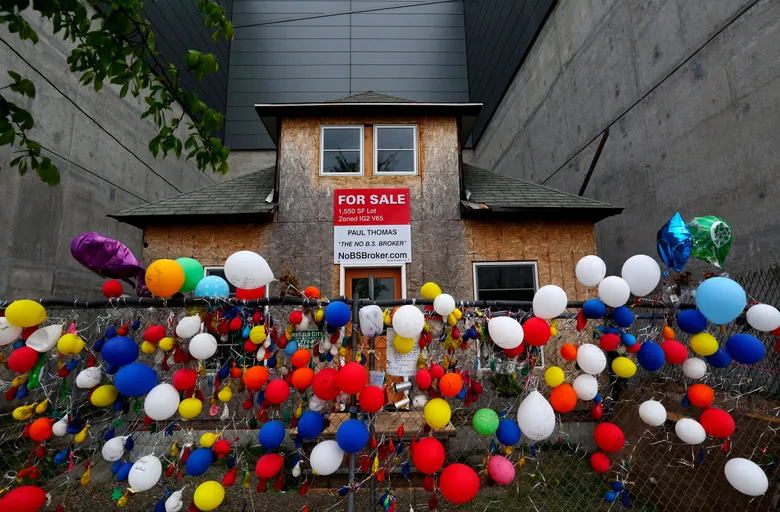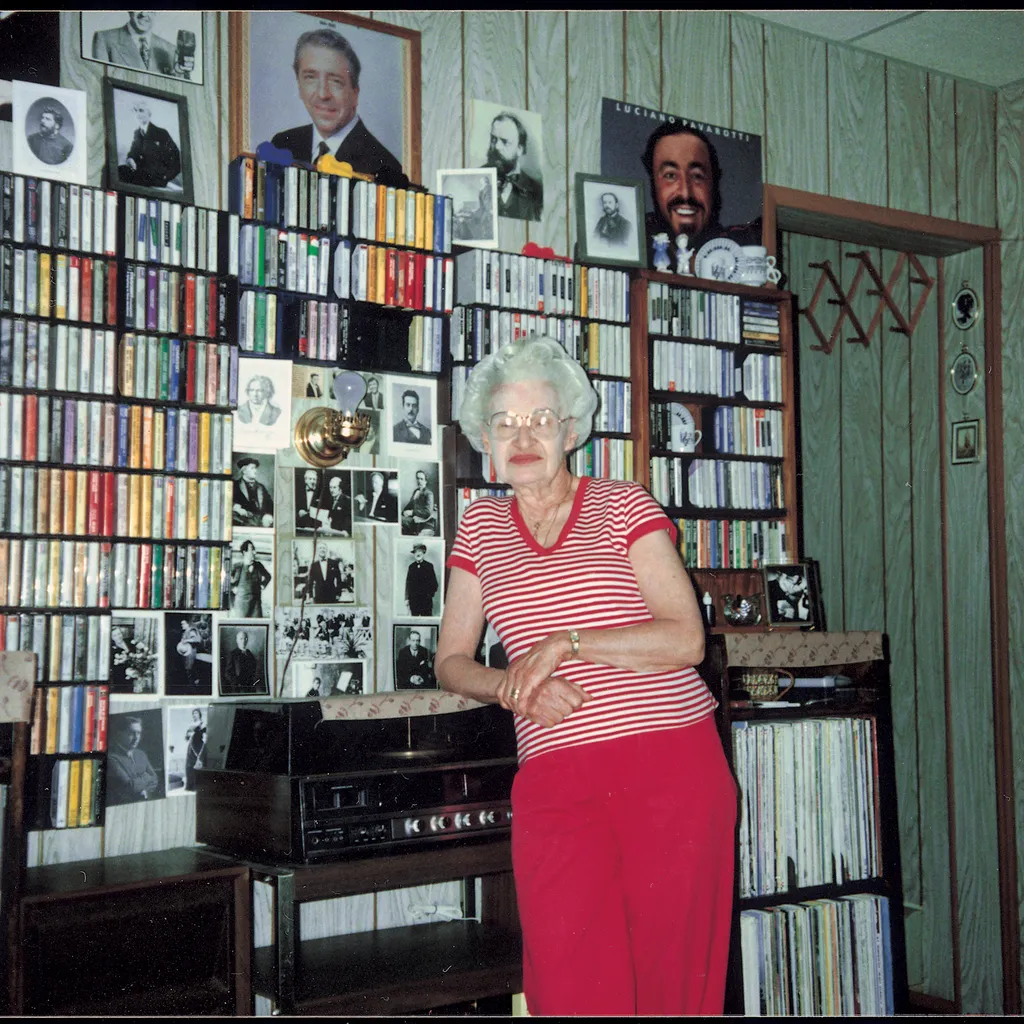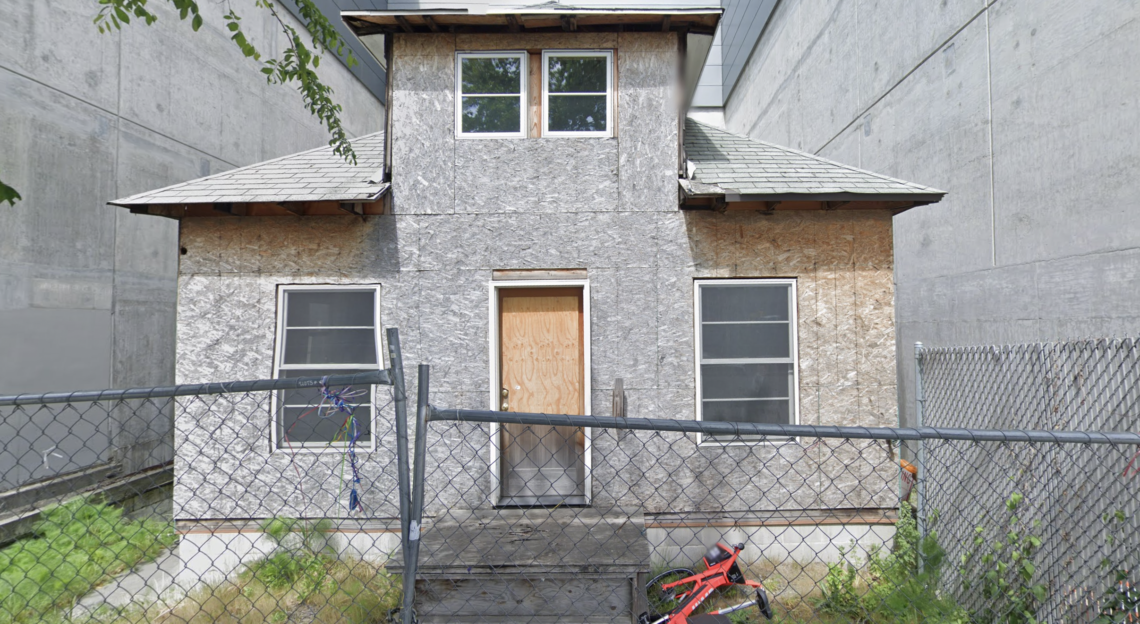Even in death, ‘Up’ house owner Edith Macefield remains a mystery
The owner of Ballard’s ‘Up’ house, who turned down hundreds of thousands of dollars and chose to stay in her home until she died, remains a mystery.
THE MYSTERIES of her life remained locked in her memory until the end. She displayed only a few pictures in her house, most prominently of her mother. In rare moments, she told strange, fantastic tales about herself before quickly shutting down.
Over the years, her past faded like lost islands. No one knew what to believe.
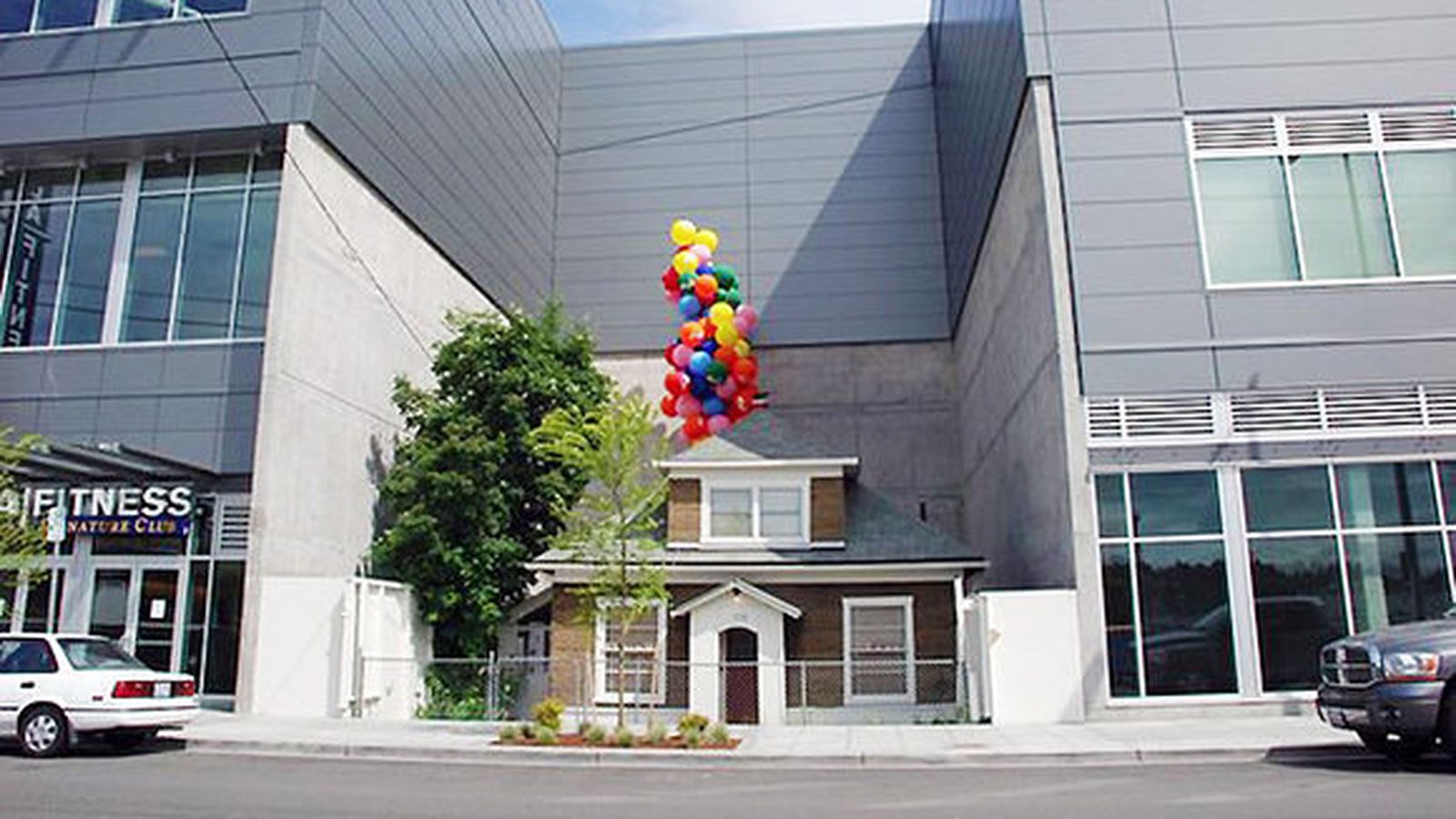
After she died, Barry Martin, the man who took care of her at the end, went through her house. The things she left behind told him small stories: black-and-white photos of her and her mother at their Ballard cottage, check stubs for short stories she’d written, her mother’s divorce records. In the attic, from inside an old shoebox, Martin pulled a small, green book, not much bigger than a notepad. It smelled of mold. He flipped through the pages filled with autographs from the 1930s and ’40s. Some names he knew. Most he did not.
Another mystery.
Just who was Edith Macefield?
EDITH MACEFIELD lived at 1438 N.W. 46th St., right by the Ballard Bridge, in the same story-and-a-half house since 1952. We call it the “Up” house. She called it Whitewood Cottage.
Her mother died in that house. Edith was robbed at gunpoint there. She rejected hundreds of thousands of dollars to continue to call those 1,050 square feet home. On June 15, 2008, after pancreatic cancer left her frail, she lay down on the burnt orange couch in the living room of that house and died. She was 86.
She became a cause célèbre, the little old lady who said no to big developers. Old Seattle vs. New Seattle. You could look at Edith’s house, boxed in by concrete and steel, and see whatever you wanted. Her story spread virally from Seattle to faraway places like London, and soon her house was everywhere, for everyone.
And yet almost no one, not even the people she kept in close company, knew much about her.
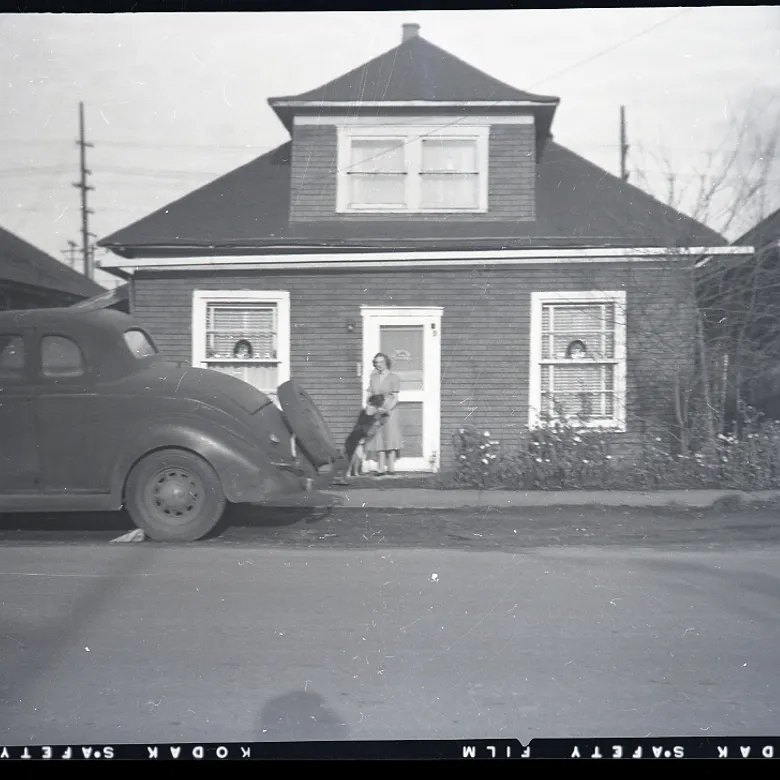
I don’t know what to believe, either. Off and on for a month, I tried to pin down Edith, mostly to no avail. I think she would have liked that.
One afternoon, I drove to see Gayle and David Holland at their sprawling home in Stanwood. Edith baby-sat Gayle and her sister in the ’50s. She bought her an outfit for Easter and took her to her cabin in Arlington. No matter how many years passed, Edith never saw Gayle as anything other than that little girl.
Gayle, now 71, retrieved a scrapbook labeled with Edith’s name from inside. She pointed to a map of the old neighborhood. Gayle and her family lived on one side of Edith’s house and Gayle’s grandmother lived on the other. It was a neighborhood then, with a small string of houses and just a few kids, but a neighborhood nonetheless. Gayle would go to Mike’s Chili Parlor, up on the corner, and get candy from the owner.
Edith bought her house in 1952 for $3,750 and lived with her mother, Alice. She worked as a store manager at Spic ’N Span Cleaners, but considered herself a writer and a musician. She loved playing the saxophone. She played golf in her yard and wrote short stories inside. Sometimes she even got paid for them. At dusk in the summers, she’d grow agitated at the kids outside and shout, “It’s time to go home! Go to bed because we need our time. We need our time!”
“I watched her while she was sick, and oh, could she get nasty,” Gayle says, turning to her husband. “She had me in tears a few times. Didn’t she, David? I’d cry and call him, ‘AH, I’M COMING HOME!’ ”
Gayle and her family moved in the mid ’50s, and she didn’t reconnect with Edith for another 40 years. Gayle kept the letters Edith sent her over the years, most touched with sweetness. What she didn’t know, until after Edith died, is that Edith had kept all of her letters, too.
December 6, 2004:
Dear Gayle,
I suppose we are all getting older, although it’s hard for me to think of the sweet little girls next door as anything but young and full of the merriment of the green years. I know it all was years ago, but in my memory it’s as fresh as yesterday.
Edith
WHEN THE DOCTOR delivered the news, Edith didn’t act surprised. Three or four times, Barry Martin, the construction superintendent who worked on the development around Edith’s house, walked her to the hospital’s entrance. But each time she refused to go in. When she finally had tests done on her stomach, the doctor told her she had pancreatic cancer.
Afterward, Barry asked if she understood what that meant. Edith said she did. It was terminal. They never really spoke about it again.
Barry worked for the construction company, but one day in 2006 Edith asked him to drive her to a hair appointment. He did, and she asked again. Over time it became their routine, along with the other duties he picked up: cooking, cleaning, scheduling appointments, talking to her doctors, dealing with her verbal sparring. Often, she would call him late at night, or right after he left, and tell him she needed help with her pills or the CD player. He remembers her thanking him only once.
“It made me think that she was afraid that if she did that, she would be vulnerable,” he says.
She left him everything, including the house, which he eventually sold for more than $300,000 to a businessman. He used the money to pay for his children’s college educations, and the future of the house has been in limbo ever since.
He looked through her stuff after she died, hoping to find pictures or postcards from Europe — anything to verify that she spent time there. He found nothing. She never talked about any of her three husbands, and he never found any pictures. She mentioned a son who died from meningitis at 13, but Barry found no tangible reminders of him.
She told wild stories about famous musicians and living at a castle in Europe. She said lots of interesting things, but whenever Barry pressed for more, she changed the subject.
He gave the porcelain animal trinkets in her house to Gayle, who displays them in her own home. Edith’s furniture went to Gayle’s granddaughter, and Gayle has never taken off Edith’s ring. Barry kept most everything else in a pile of boxes at his house.
A few days after we met, Barry handed me one of those boxes, hoping I’d find some truth.
“Good luck,” he said.
January 26, 1950
Editor, The Times:
I manage a downtown apartment. The building is old, but by no means a fire hazard … But because the outside is somewhat dingy, the constant remarks are — “Tear the shack down!” “It’s a fire trap!” “A dump!” etc.
Our building is tenanted by pensioners and other common decent people who cannot afford to pay higher rent. If all the older buildings were torn down, where would all these people go?
Edith Macefield, 606 Columbia St.
THE BOX TURNS into a hall of mirrors: Everything I find leads to more questions.
Stuffed in an envelope, Edith kept three marriage certificates, all from different countries. In 1939, she married James Macefield in England. In 1958, she married a man in Wales. And in 1984, she married again in Italy, although a handwritten note on the envelope says the man died soon after their honeymoon.
But even what on the surface looks concrete soon becomes strange. None of the marriage certificates have an official seal. The handwriting looks suspiciously similar. The same person witnessed her wedding in 1939 in England and in 1984 in Italy. More to the point, when would she have had the time to find love and get married in Europe three different times? And why did she keep the name Macefield after marrying two more times?
Her birth certificate says she was born Aug. 21, 1921, as Doris Edith Wilson in North Bend, Ore. At some point she stopped going by Doris, although the name appears sporadically into the late ’30s.
There’s an old photo of a baby girl with “daddys favorite picture”
scribbled on the back. That same little girl sits with a middle-aged man and a younger-looking man in another picture. On the back, in pencil, someone wrote “daddy and brother.”
She kept school records from second and third grade in Aberdeen for Louis Wilson, who I presume to be her brother. But I never saw his name anywhere again.
According to records, she never served in the military. She spent $23,000 in 1994 to publish two copies of her 1,138-page novel titled “Where Yesterday Began” and dedicated the book to a doctor who remembered little about her when reached by The New York Times. She kept copies of the short stories she had published in obscure magazines, for which she received up to $75, but there’s no evidence to suggest she made it big in Europe.
What I do know is that she bought her house in 1952 and by 1954 had paid it off. She shows up in the city directories starting in 1950 as Edith W. Macefield, a widow. Metal fabricators, electric companies and vacant lots replaced the homes in her neighborhood over the years. She loved listening to music. She loved writing. She did both as often as she could but never enough.
She worked as a manager at Spotless Stores and as a dental lab assistant. Her mother died in 1976, and she retired around the same time. She is buried above her mother in the same plot at Washelli Cemetery, near a tree and the road.
BY THE TIME I SEE the green book with the signatures, my head is spinning. Taylor Bowie, a local antiquarian and avid fan of old actors and musicians, agrees to take a look.
I pull out the book at a coffee shop in Ballard, not far from where Edith’s vacant house stands like a dead leaf in the fall, and warn him about the musty smell.
He turns the pages and rattles off names that used to mean more than they do now: Bob Chester, Richard Crooks, Maurice Chevalier.
“Strange,” he says.
There are more: Tommy Dorsey, Charlie Chaplin, Margaret Sullavan. He flips to Erich von Stroheim and stops. “Jesus, that can’t … I don’t know … That’s too good to be true,” he says. “He was one of the great cult movie figures and directors of all time. A poem in some woman’s autograph book?”
He shakes his head and stares. He points out another signature that leaves him skeptical, but not more than 15 seconds later he comes across a signature he knows well: Warner Baxter, an actor whose autograph he has collected for years. The signature is absolutely real.
He turns to more names. Ronald Colman, another actor. A few pages later is Katharine Hepburn. He lights up as he reads each name aloud. Jean Gabin, Harry James, Jimmie Noone. The more he turns, the more intrigued he looks. Some of the signatures include exact dates and locations: New Orleans, Chicago, Los Angeles. Others have elaborate, personal notes and strange poems.
By the last page, Bowie closes the book and says that at least two-thirds of the signatures are real.
“This is the strangest god damn autograph book I’ve seen in a long time,” he says. “You know what’s really amazing? The interest in her all had to do with the house. That’s actually the least interesting part about her, isn’t it?”
May 4, 2006
It is always a delight to receive encouragement from one who shares a similar life outlook. But do let me explain: long ago stood this little string of houses in a semi-industrial area of old Ballard. Nestled between two other old-timers rose this story and a half construction that called out to my aging Mother. This was the house my Mother wanted sooo — she dragged me all the way from England to see and approve her decision. You see, she had never had a home of her own. What could I do? I bought her the house.
A Stone Company moved behind somewhere in the early days. One by one they bought out the houses around — finally leaving Mother alone with her happy house and narrow garden. She refused to sell. As the years went by — the offers went up. She refused to sell. Then thirty years ago she died in the house. I missed her, of course. Everyone thought I would sell, go back to England. I never did. Somehow this old house wrapped its age-old structure around me and hung on (Why run away/I’m big enough for your needs, it seemed to say)
Now I am eighty-five, disabled and here come the offers … Even if I wanted to, I’m too crippled to move. But even so I’ll never give up the contentment my Mother and I found here. source
Famous Edith Macefield house up for lease at the Ballard Blocks
Regency Centers owns the Ballard Blocks complex and the little 1,400-square-foot house within it (1438 N.W. 46th St), once home to Edith Macefield.
Macefield became famous when she refused to sell her property to developers even when they offered her $1 million for the small home. She died in 2008, but her wishes have been honored ever since Regency acquired the house in 2015 from its interim owner.
The house is commonly known as the “Up” house—some believe it inspired the 2009 Pixar movie. It’s certainly inspired people in Seattle, from the Macefield Music Fest which launched 2013 to the “Steadfast” tattoos that started popping up on Seattleites arms. source
It was even the inspiration for a BBC radio drama produced back in 2019.
The house has been for lease for quite a while, John Chelico from the leasing company Kidder Matthews told My Ballard. He says they don’t envision allowing significant changes to the property, but said they’d like to see it turn into a cafe, perhaps with outdoor seating. “Something to make use of the quaint feel of the building,” he said.
When asked why it’s only now being put up for lease, Chelico said it’s been something that’s “been on everyone’s minds for a long time.”
The property is listed on Commercial Exchange.

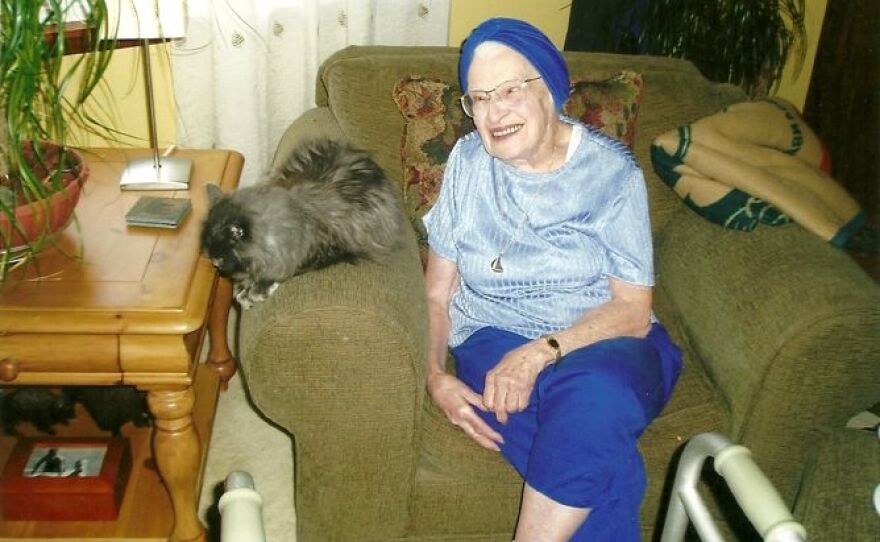
Edith Macefield (August 21, 1921 – June 15, 2008) was a real estate holdout who received worldwide attention in 2006 when she turned down an offer of $1 million to sell her house to make way for a commercial development in the Ballard neighborhood of Seattle, Washington[1][2][3][4][5][6][7] (originally reported as a package worth $750,000).[8] Instead, the five-story project was built surrounding her 108-year-old farmhouse, where she died at age 86 in 2008.[9] In the process, she became something of a folk hero.[10]
After she died, Macefield willed her house to the new building’s construction superintendent, Barry Martin, in gratitude for his friendship and caretaker role.[6][11] Martin told the Seattle Post-Intelligencer, “Two or three times she was basically going to sell and move, and then I know the last time she ended up falling and breaking some ribs, and that kind of took the gas out of her, and then it was just too much work.”[12]
Early life
Macefield was born in Oregon in 1921 and learned French, German, and other languages. She joined the military and was sent to England, where she was later taken out of the service after officials discovered she was not 18 years old.[13] Macefield stayed in England where she took care of war orphans, and later moved back home, where she took care of her mother and worked at Washington Dental Service.
She was married four times, all in Europe.[N 1] She outlived her last three husbands and her only child (a son who died at 13 from spinal meningitis) by decades.[14]
Macefield turned down a reported $1 million offer to sell her home in 2006 to make way for a commercial development in the Ballard neighborhood of Seattle. In the process, she became something of a folk hero. Instead, the five-story project was built surrounding her 108-year-old farmhouse, where she died at age 86 from pancreatic cancer. The house is located at 1438 NW 46th St.
Legacy
As she intended, she died at her family home. She was buried in Evergreen Washelli Cemetery, Seattle, beside her mother, who had died in 1976 on the same couch as she did.
On May 26, 2009, Disney publicists attached balloons to the roof of Macefield’s house, as a promotional tie-in to their film, Up, in which an aging widower’s home is similarly surrounded by looming development. However, scriptwriting and production on Up began in 2004, two years before Macefield’s refusal to sell to the property developers.
In July 2009, Barry Martin sold the house to real estate investor Greg Pinneo for $310,000. Pinneo intended to use the house as an office to run his real estate coaching firm Reach Returns. However, on March 13, 2015, the house went through foreclosure auction and was subsequently put back on the market. Pinneo had failed to pay back taxes on the house.
The inaugural Macefield Music Festival was held October 5, 2013, in Ballard. The event included multiple musical genres, in several venues. The promoters said it “will be an affordable way to explore the current landscape of Seattle music while celebrating the steadfast attitude of the dearly departed Ms. Macefield.”
A 99% Invisible podcast titled “Holdout” (#130) discussed the story of Macefield.
BBC Radio 4 broadcast a play, The Macefield Plot written by Daniel Thurman, on May 14, 2019, (repeated in June 2021). Directed by David Hunter, it starred Siân Phillips as Macefield and Stanley Townsend as Barry Martin.
- ^ Jump up to:a b
- Mulady, Kathy (June 16, 2008). “Edith Macefield, 1921-2008: Ballard woman held her ground as change closed in around her”. Seattle Post-Intelligencer.
Macefield’s stubbornness was cheered by Ballard residents tired of watching the blue-collar neighborhood disappear under condominiums and trendy restaurants.
- Mulady, Kathy (June 16, 2008). “Edith Macefield, 1921-2008: Ballard woman held her ground as change closed in around her”. Seattle Post-Intelligencer.
- ^ Jump up to:a b *“Wash. Woman Defiant Despite Development”. Associated Press. October 3, 2007. Archived from the original on May 6, 2016. Retrieved April 14, 2012.
The little old lady who lives in a little old house is stubborn in a very BIG way.
- Mulady, Kathy (October 3, 2007). “Old Ballard’s new hero digs in as retail project envelops her home”. Seattle Post-Intelligencer. Archived from the original on June 29, 2013. Retrieved April 14, 2012.
The Ballard woman who captured hearts and admirers around the world when she stubbornly turned down $1 million to sell her home to make way for a commercial development died Sunday of pancreatic cancer.
- Mulady, Kathy (October 3, 2007). “Old Ballard’s new hero digs in as retail project envelops her home”. Seattle Post-Intelligencer. Archived from the original on June 29, 2013. Retrieved April 14, 2012.
- ^ Jump up to:a b
- Hartman, Steve (October 12, 2007). “The Woman Who Wouldn’t Sell: She’s Standing In The Way Of Progress – So They’re Building A Shopping Center Around Her”. CBS Evening News.
- Hartman, Steve (March 21, 2009), A Homeowner Who Wouldn’t Sell, Part II, CBS Evening News,
One of Steve Hartman’s more memorable reports was about a woman who stubbornly refused to sell her house, even as a giant building went up all around her.
- ^ Jump up to:a b
- Mirk, Sarah (January 11, 2007), “The Bullshit Next Door; Ballard’s Shit-Talking, Self-Appointed Neighborhood Crank”, The Stranger,
Recently, though, Andrews met someone worthy of his praise rather than his scorn: an 84-year-old woman named Edith Macefield who’s just as stubbornly individual as he is.
- Mirk, Sarah (January 11, 2007), “The Bullshit Next Door; Ballard’s Shit-Talking, Self-Appointed Neighborhood Crank”, The Stranger,
- ^ Jump up to:a b “Wash. Woman Defiant Despite Development”. Associated Press. October 3, 2007. Archived from the original on May 6, 2016. Retrieved April 14, 2012.
- ^ Jump up to:a b c Mulady, Kathy (October 3, 2007). “Old Ballard’s new hero digs in as retail project envelops her home”. Seattle Post-Intelligencer. Archived from the original on June 29, 2013. Retrieved April 14, 2012.
- ^ Jump up to:a b Hartman, Steve (October 12, 2007). “The Woman Who Wouldn’t Sell: She’s Standing In The Way Of Progress – So They’re Building A Shopping Center Around Her”. CBS Evening News.
- ^ Jump up to:a b Westneat, Danny (2006-02-08). “Big offer for tiny home leaves woman unmoved”. Seattle Times. Archived from the original on February 21, 2006.
- ^ Jump up to:a b Mulady, Kathy (June 16, 2008). “Edith Macefield, 1921-2008: Ballard woman held her ground as change closed in around her”. Seattle Post-Intelligencer.
Macefield’s stubbornness was cheered by Ballard residents tired of watching the blue-collar neighborhood disappear under condominiums and trendy restaurants.
- ^ Jump up to:a b Norris, Michele (June 20, 2008). “All Things Considered: Remembering Seattle’s Edith Macefield”. National Public Radio.
- ^ “Edith Macefield’s Seattle house goes ‘Up’ for auction”. CBC News. April 20, 2015. Retrieved May 26, 2015.
Martin was the construction foreman back in 2006 for the building project, but became close friends with Edith. His friendship soon transitioned into a caretaker role for the elderly woman.
- ^ Cohen, Aubrey (March 10, 2009). “Ballard woman’s last stand is still standing”. Seattle Post-Intelligencer.
- ^ Edith Macefield, 1921-2008: Ballard woman held her ground as change closed in around her, Mulady, Kathy, seattlepi.com
- ^ Jump up to:a b c d e “Edith Wilson Macefield: A House Is Your Home”. Free Encyclopedia of Washington State History.
- ^ “Searching for Edith Macefield”, seattletimes.com; accessed February 18, 2016.
- ^ Guzmán, Mónica (May 26, 2009). “Wind sabotages ‘UP’ balloon display over Macefield home”. The Big Blog. SeattlePI.com.
When publicists for Disney’s “UP” announced they were going to tie balloons to late local hero Edith Macefield’s house in Ballard as a promotional stunt, we thought hundreds, maybe even thousands of the colorful helium globs would reach into the sky, dwarfing the small bungalow below and putting the surrounding complex to shame … Turns out the display had many more balloons when it was first set up at 9 a.m. Then the wind blew, pushing the balloons into the surrounding walls, where they began to pop.
- ^ “Up Producer/Director”. Moviehole. February 10, 2009. Retrieved January 1, 2020.
How many people worked on the script, and for how long? …. Bob Peterson started in 2004.
- ^ Jump up to:a b Raftery, Isolde (March 13, 2015). “Auction Of Edith Macefield’s Ballard House Was Mostly For Show”. kuow.org. Retrieved May 26, 2015.
- ^ “Washington: Little House Has New Owner and Purpose”. Associated Press. July 8, 2009.
- ^ King 5 News (February 4, 2015). “Edith Macefield’s house may go up for auction”. Retrieved May 26, 2015.
- ^ Copeland, Kwab; Michael Stephens; Chris Harrison. “Macefield Music Festival”. Archived from the original on October 5, 2013. Retrieved October 5, 2013.
- ^ “Holdout”, 99% Invisible, Retrieved February 18, 2016.
- source


